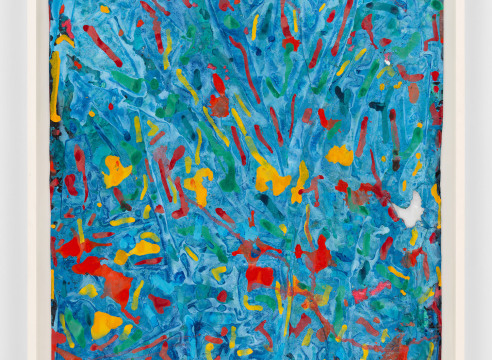

Moshekwa Langa's works can be read like the pages of a diary, like annotations relating to events in his life. In a more or less direct way, they evoke recollected impressions of a place, the memory of an image seen in a magazine or a moment associated with the melody of a song. The key to their reading may be directly inscribed in them, as, for example, when the names of historical figures, acquaintances or friends are crossed in the form of lists, but this mental geography sometimes remains entirely abstract, with the only clue being a title, always linked to a fleeting moment in the artist's life. Moshekwa Langa's impressionism finds its closest equivalent in the work of James Joyce, whose method he has adopted and who, in the text as well as in the paintings, intertwines in the same flow everyday sensations and historical events.
Most of the images in the series of paintings assembled in Toulouse come from a collection of collages recently made in South Africa from newspaper cuttings and entitled Ingwe Mabala-bala (The Coloured Leopard in Ndebele or Zulu), the title of a popular song that can be found in both indigenous cultures and Christian rituals. Advertisements for various services offered by marabouts or for the evangelical church, objects or archival photographs were torn, altered, partially erased and combined in a series of black and white compositions. Enlarged and reworked, these fragments provided the material for a series of canvases covered with paint and sandpaper. The original motif, though barely recognisable, remains perceptible 'like Macbeth's bloodstain'. Other circular marks appear around the frame. These have been left by the jars, bombs, bottles and cans that lined them to smooth them out. Like many of the artist's works, they have been worked on the ground, in a quasi-cartographic process that finds its counterpart in the luminous constellation drawn by a network of lounge lamps placed on the ground. This last element is a borrowing from the artist's own biography, who had arranged a set of lamps in the same way in the centre of a display of coils and various objects, some ten years earlier in an American museum.